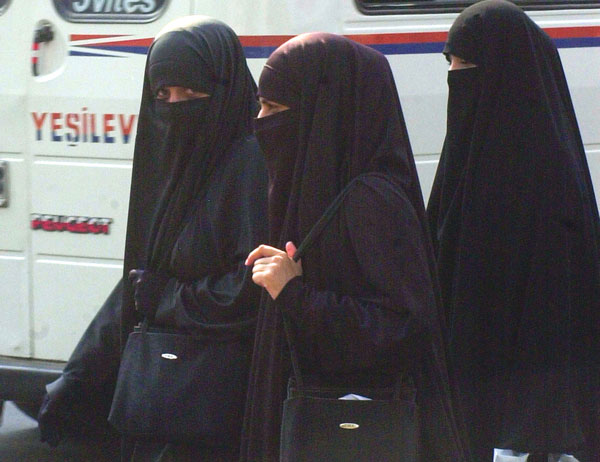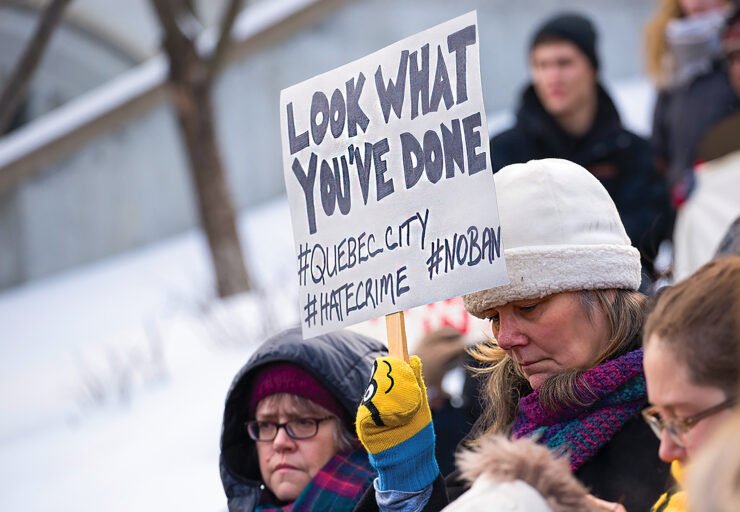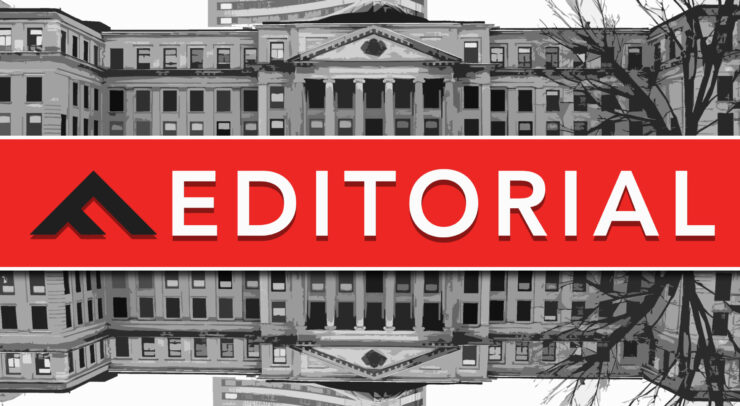Photo: Creative Commons, Agencia Brasil
Many Canadians were surprised to see the most heated exchange during the french-language debate last week not to be about the economy or national security, but instead the right to wear the niqab during citizenship ceremonies.
for those who don’t know, a niqab is a face covering that some Muslim women wear, which covers a woman’s face and hair, excluding her eyes. there is debate among Muslim scholars whether the niqab is obligatory or not.
Recently the federal court of appeal dismissed the federal government’s appeal to a previous decision that struck down the government’s ban on wearing full veils at citizenship ceremonies. The conservative government said they would take the matter to the Supreme Court, and reimplement the niqab ban, which was first introduced in 2011, within the first 100 days of re-election.
This ideological tug of war began when a Muslim woman, Zunera Ishaq, took the government to court, refusing to take part in a citizenship ceremony if she was forced to show her face in public.
We have to wonder, what threat does the niqab pose that would make the government take such harsh actions? We’re not sure we’ll be able to answer that question for you.
Both the Conservatives and Bloc Québécois argued against the niqab during the debate, saying it marginalizes women.
“I will never tell my young daughter that a woman should cover her face because she is a woman,” said Harper during the debate. “that’s not our Canada. that’s not acceptable to me.”
He has also previously said the niqab was “rooted in a culture that is anti-women.”
“The first bill the Bloc Québécois will introduce is forbidding voting while wearing a face covering, oath of citizenship or granting services with a face covering,” said Duceppe during the debate, whose party has also been running aggressive attack ads against the niqab.
Opponents of the veil have used fear mongering and misinformation to drum up support for the ban, and unfortunately, it’s working. Results of a government-funded poll found that 82 per cent of the 3,000 Canadians surveyed said they supported a requirement that people show their faces during citizenship ceremonies.
Support was highest in Quebec at 93 per cent.
Do these two leaders really think the best way to combat the marginalization of women is by policing what they wear? Is taking a woman to the Supreme Court of Canada because you don’t approve of her outfit a feminist move?
According to a report conducted earlier this year by the Canadian council of Muslim Women, the majority of women said they wore a niqab out of religious obligation and as an expression of their identity, none said they were forced or encouraged to wear the niqab by family members, except for spouses. Most of the women, the majority of whom were Canadian citizens born abroad, said they began wearing the veil when they arrived in Canada.
From a security point of view, Ishaq—and many other women who wear the veil—are happy to show their faces before an official, but don’t wish to take off the niqab during the public part of the ceremony.
“Probably the main takeaway of that is that all the people we talked to were very anxious to emphasize that they could be flexible,” said Lynda Clarke, a Concordia professor who authored the report, according to the Toronto Star. “Clearly they do have boundaries… but what they wanted to emphasize is ‘yes, I could lift this, I could do that, that’s fine.’”
The report does have a small sample size, 38 women were surveyed online, 35 participated in focus groups, and eight were interviewed in depth, but it does serve as an indicator that the issue is more complex than it seems. It also demonstrates the need to consult with Muslim women.
Seeing the issue brought up at a federal debate, one has to wonder, how many people does this issue actually affect? The answer is unknown, but the Federal Court puts the number of women who want to take their citizenship test wearing a veil at around 100 nationwide. To put this number in perspective, there are just over a million Muslim women in Canada.
Here are a few other issues that concern only 100 people in Canada:
- The number of students who voted in last year’s GSAÉD elections.
- The amount of people in Ottawa who “can’t wait for winter, no really, winter’s great” (we assume).
- Less than half of the number of car accidents in Canada that involve a collision with a moose (247 is the actual number).
- The estimated amount of Ontario residents who own a pet lion or tiger—wait sorry, actually there are five times the amount of people who own pet lions and tigers in Ontario than wear niqabs to citizenship ceremonies in Canada.
Now here’s a few issues that affect a lot more than 100 people that weren’t discussed as in-depth as the niqab at the debate.
- The amount of Canadians who can’t afford to own a home, because of the housing bubble.
- Issues facing Canada’s aboriginal population such as less access to education, healthcare, and adequate housing, higher rates of incarceration per capita, high numbers of missing and murdered indigenous women, and more.
- Issues in the Far North, including extreme poverty, exponential food prices, and soaring suicide rates.
- The number of Canadians who will suffer from a mental illness at some point in their lives (1 in 5).
- The number of Canadians who will not be able to vote this election, or will have difficulty voting because of the Fair Elections Act.
- The amount of students who will not be able to pay off their student loans this year.
The government has failed to provide ways that the niqab directly affects other Canadians. We challenge you to think of it as well: how does someone’s clothing choices affect you personally?




